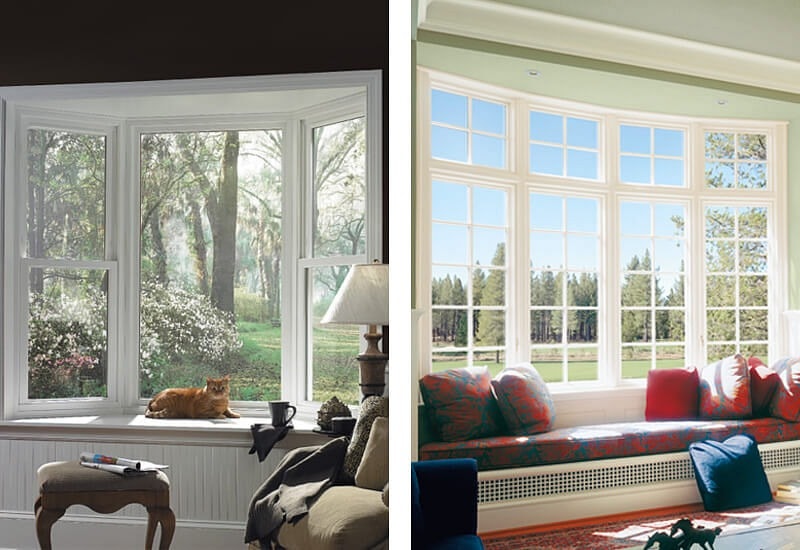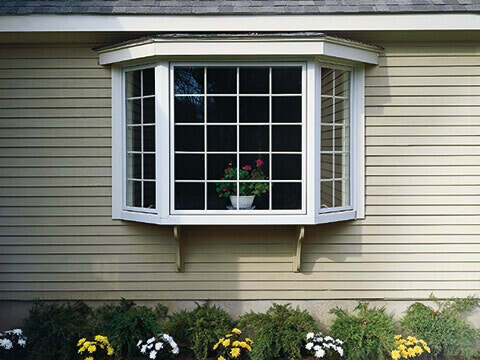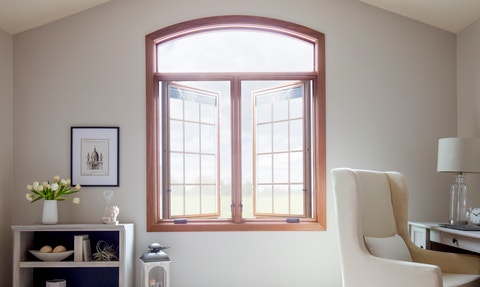Bay vs Bow Window: A Comparison Guide
Posted
on August 4, 2016

Both bay windows and bow windows are stately architectural elements that have been used for many years and are still seen commonly used today. Their popularity is likely the result of their ability to accent the existing features of a building while also offering a sun-filled spot to sit and enjoy the view. Both inside and outside of a room, they can add a distinct element that opens up the space in unique ways.
If you are considering which of these options to go with, but are not clear on the difference between bay window and bow windows, it’s helpful to look at some of the key distinctions. Depending on the specifics of your room, taste, or budget, one or the other may stand out as a clear leader.

Size
Appearance and size are some of the first things to consider when choosing between bay and bow windows. Bay windows fit best in exterior wall spaces 40 inches or larger in size. They include three windows, traditionally a large fixed window in the middle with a smaller flanking window on each side.
Bow windows are ideal for exterior walls or corners where 80 inches or more can be allocated. A flexible option, they include four or more fixed or vented windows that let you choose a custom combination that speaks to your design preferences and home.

Style
Much of the bay window vs bow window debate comes down to a style preference. On the one hand, bay windows are angular with a large, fixed central window that extends from the building. They come in different varieties, most commonly octagonal, hexagonal, or square, with smaller window panes on the side. In contrast, the bow window includes a series of casement windows lined up along a curved structure. Bay windows tend to extend further from the building which also means they provide slightly more floor space as well as more area to sit. However, bow windows tend to be wider, and can even be installed around the corner of the house.

Light
One of the best ways bay and bow windows can add vibrancy to a room is by flooding it with light. They create extra window space in a given stretch of wall and allow light to be captured from different angles, meaning east or west facing windows can get more sunlight at different times of the day. Since bow windows are made with more panes of glass and less framing, they are often better at capturing more light than bay windows. Of course, their ability to serve this purpose depends much more on the other architectural and landscaping features of your building, so taking the whole picture into consideration is key.
Ventilation
If air circulation is important in your room, think carefully before choosing bow windows. While opening bow windows can be installed, they are sometimes more expensive or can disrupt the overall flow of the windows' elegant curvature, making them less desirable. Bay windows on the other hand can easily accommodate opening mechanisms and function just like ordinary windows.
When it comes down to your budget, the options are similar, as both are one-off window installations. Prices can bottom out at around $4,000 to $5,000 for more modest jobs. Bow windows, however, have the potential to demand extra engineering in certain cases, sometimes fetching prices well beyond $10,000. The best way to get a clear picture of how much your bay or bow window installation will cost is to talk to a professional.
Other factors to consider
When installing new bay or bow windows in a room, the key factor to consider is space, both inside and outside. Since bay windows extend further from the building, it will be important to make sure there is ample space, especially if your building façade sits close to the street or sidewalk. In these cases, bow windows may be preferable. Inside, the depth and width of the window becomes important. When working in comparatively narrow spaces, bay windows have the advantage, and can also add extra floor space, which is never a bad thing.
Looking to flood your home with natural light and bring nature inside? Choose the expansive views offered by bow windows.
Working with a compact space? Pick space-efficient bay windows that add natural light and seating.
There is always more to consider when it comes to the difference between bay window and bow windows, but luckily Pella has the answers you are looking for. For information about specific prices on bay and bow windows, their hardware, or to schedule your free in-home consultation, get in touch with the window replacement team at your local Pella Windows & Doors Showroom.
Schedule a free consultation to find windows and doors for your home.
